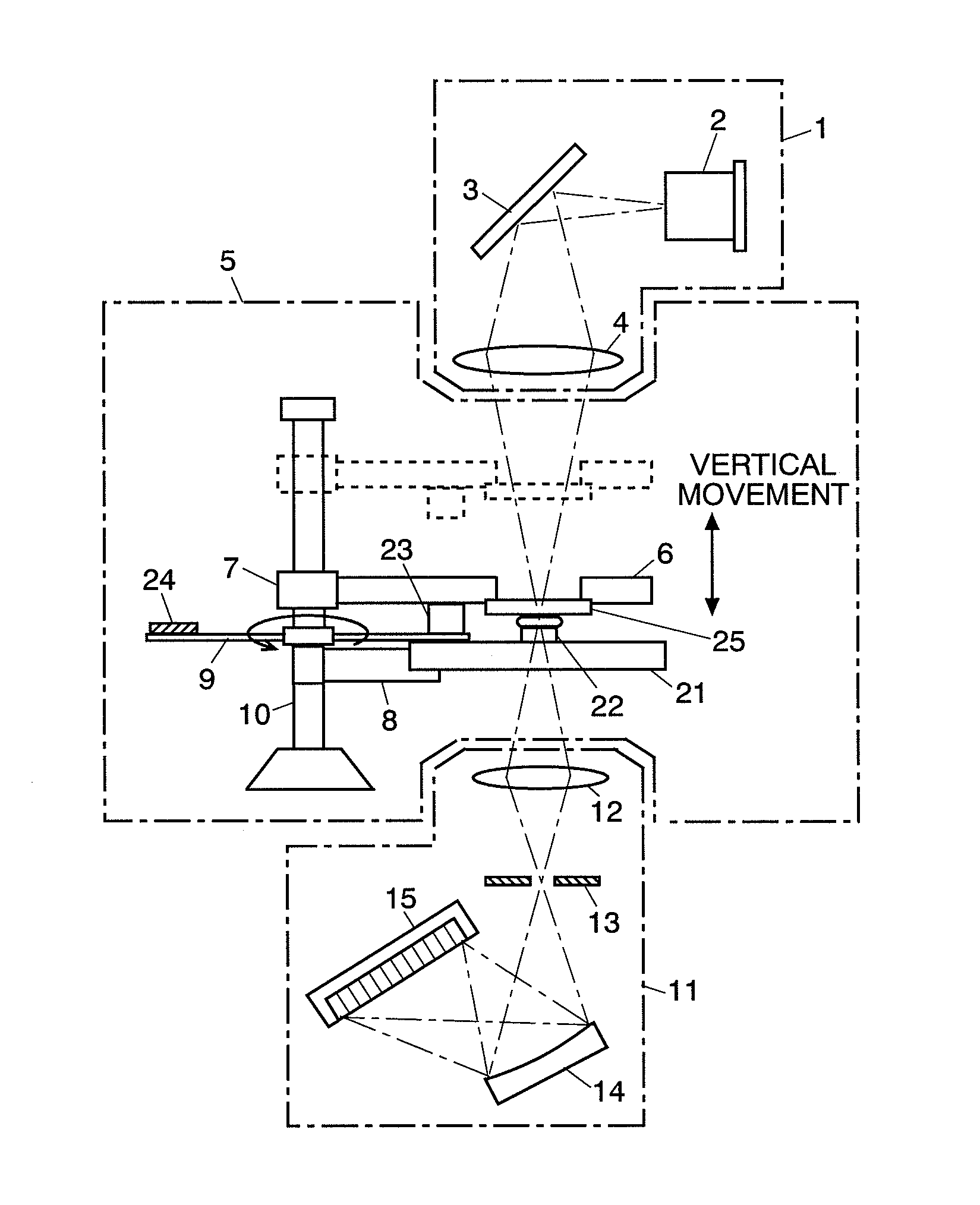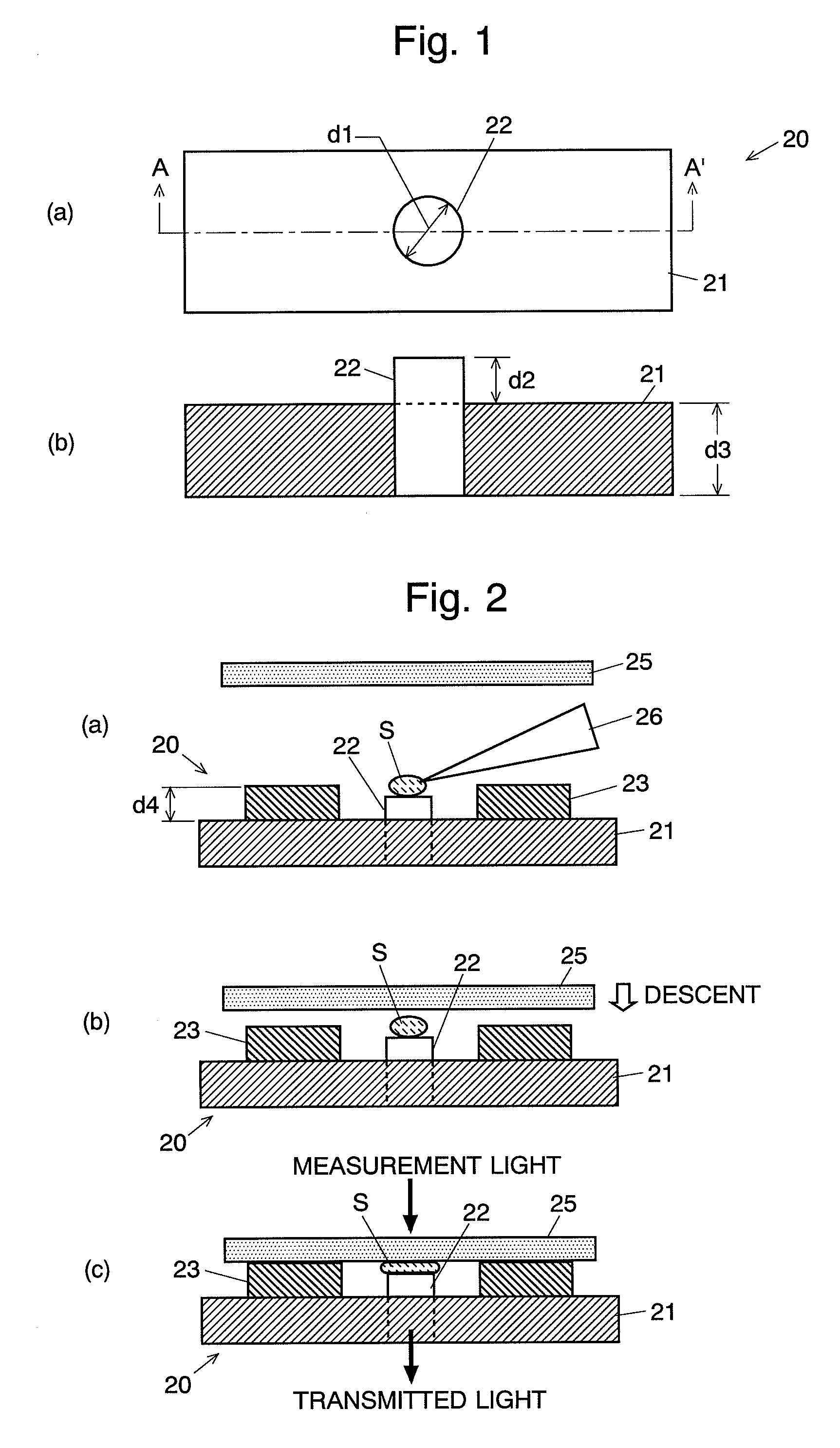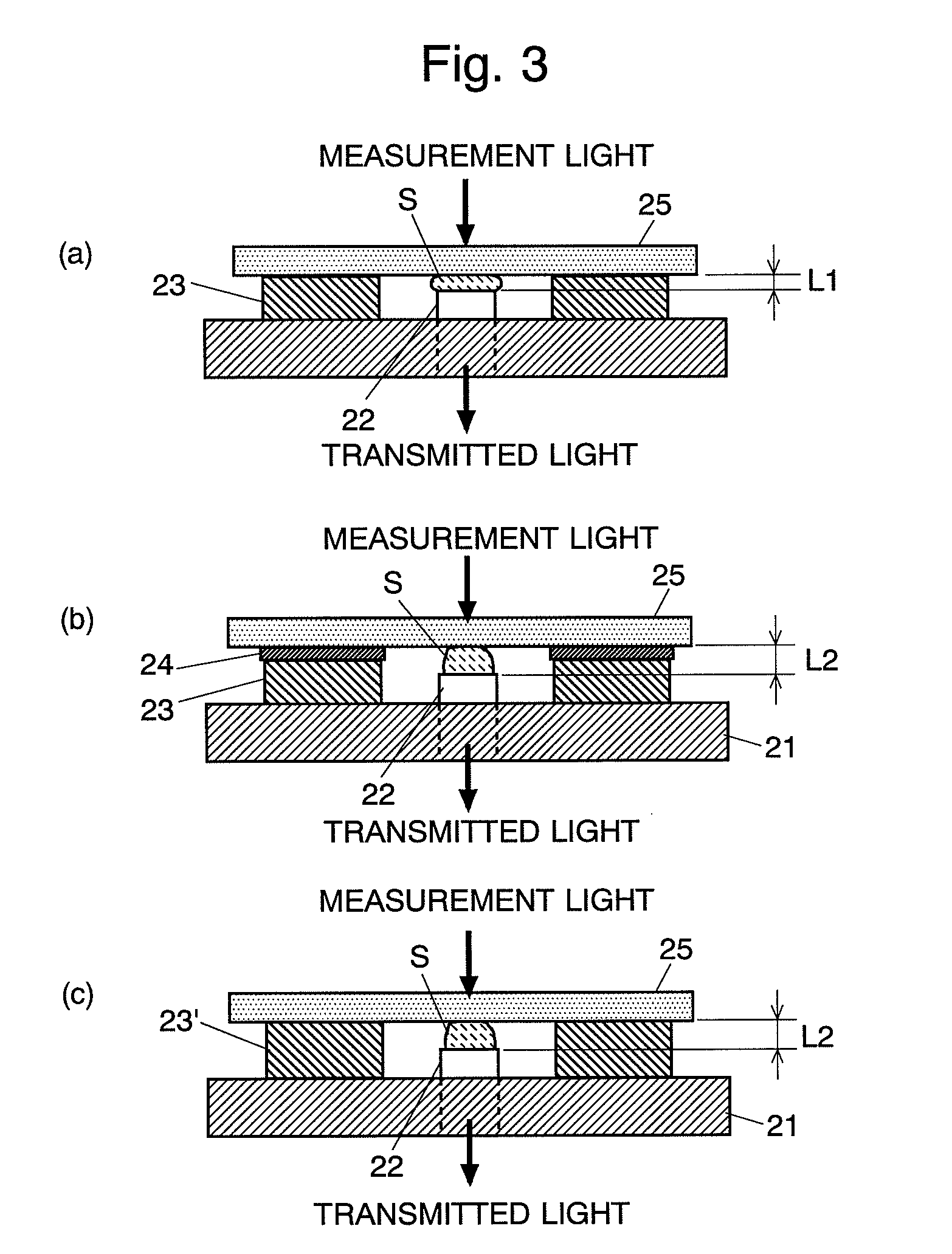Spectrophotometer
a spectrophotometer and liquid sample technology, applied in the field of spectrophotometers, can solve the problems of inability to use the cuvette cell as previously described, and inability to analyze such a small amount of liquid sample, etc., to achieve easy cleaning operation, simple operation regarding analysis, and low cost
- Summary
- Abstract
- Description
- Claims
- Application Information
AI Technical Summary
Benefits of technology
Problems solved by technology
Method used
Image
Examples
Embodiment Construction
[0064]An embodiment of the spectrophotometer according to the present invention will be described with reference to the figures. First, the characteristic configuration of the sample holding unit which is used in the spectrophotometer of the present embodiment is described. FIG. 1(a) is a top plain view of the pedestal unit of the sample holding unit and FIG. 1(b) is an end view of the same pedestal unit viewed from the arrow A-A′. FIG. 2 is a schematic side view for explaining the procedure of setting a liquid sample in this sample holding unit.
[0065]The sample holding unit is roughly composed of a pedestal unit 20 and a transparent cover plate (i.e. the window plate in the present invention) 25 to be placed thereon. As illustrated in FIG. 1, the pedestal unit 20 is composed of a base plate 21 made of a material such as metal or plastic having a light-blocking property and a cylindrical light-transmitting body (i.e. the sample stage in the present invention) 22 made of a material h...
PUM
| Property | Measurement | Unit |
|---|---|---|
| optical path length | aaaaa | aaaaa |
| diameter d1 | aaaaa | aaaaa |
| diameter d1 | aaaaa | aaaaa |
Abstract
Description
Claims
Application Information
 Login to View More
Login to View More - R&D
- Intellectual Property
- Life Sciences
- Materials
- Tech Scout
- Unparalleled Data Quality
- Higher Quality Content
- 60% Fewer Hallucinations
Browse by: Latest US Patents, China's latest patents, Technical Efficacy Thesaurus, Application Domain, Technology Topic, Popular Technical Reports.
© 2025 PatSnap. All rights reserved.Legal|Privacy policy|Modern Slavery Act Transparency Statement|Sitemap|About US| Contact US: help@patsnap.com



